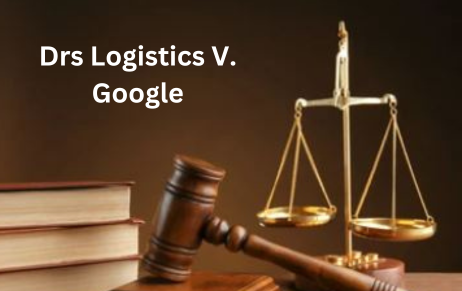ABSTRACT The project employs doctrinal research methods, i.e. secondary research which involves writing on basis…
Safeguarding The Cover, Not The Book: Understanding, By Case Laws, The Theory Of Trademark Dilution
Introduction
Good Biscuits & Bad Biscuits
Say, for example, that you like biscuits from brand A. You buy them because they taste good. Now, brand D, knowing the popularity of brand A’s biscuits, releases their product whose packaging and design are similar to that of brand A, and since they look alike, you (and a lot of other people) end up buying the rip-offs, confusing it to be from brand A.
Two very significant things happen here: First, you (and others) are misled by the use of two marks, of which one is deceptively similar to another. And second, brand A loses a substantial slab of profit because brand B is capitalizing upon the goodwill and reputation of brand A’s mark.
[Image Sources : Shutterstock]

A Car & a Thermos
Now, let us consider a slightly different scenario. Everyone knows the brand “Mercedes” and is aware that they deal in motor vehicles. So, say, on your shopping spree, you come across someone selling premium flasks ( or any other product) under the tag of Mercedes, using their logo. The Question would be: Would people consider these flasks to have been made by Mercedes? If they don’t, there would, of course, be no statutory remedy. However, if they do, what then? Can a brand claim statutory remedy over the infringement of their trademark for dissimilar goods?
The answer is a resounding yes.
THEORY OF TRADEMARK DILUTION: Section 29(4), THE TRADEMARKS ACT, 1999
The remedy for an infringement action where the marks being used are the same, but in the context of goods which are dissimilar, lies under Section 29(4) of the Act. Popularly, it is also known as the Trademark Dilution Theory. This is also known as the Kodak doctrine in international literature, which refers to the British case in which the use of KODAK mark famous for photogenic cameras was enjoined on dissimilar or non-competing products, bicycles.
The Trademark Dilution Theory was first propounded by Frank I. Schechter in 1927. He identified that the court’s approach, in cases of infringement of a trademark, did not include instances where the goods were dissimilar. Every once in a while, the courts would pronounce judgments providing a remedy in said cases, but this did not happen as a matter of principle, and the application of said rules were arbitrary and was judicially recognized.
Therefore, the court’s outlook in cases of trademark infringement, back in those days, could be summarized as such: If he does not carry on a trade in iron, but carries on a trade in linen and stamps a lion on his linen, another person may stamp a lion on iron, is still the law.
To this outlook, Schechter commented that the function of a trademark has undoubtedly expanded and requires better statutory protection. He was of the view that the function of a trademark is not merely to act as a symbol of good will, because a trademark often plays the most effective agent for the creation of good will, as, according to him, the mark actually sells the goods. Therefore, statutory protection granted to the trademark should not be limited to the issue of deception, but should extend to prevent people from destroying the originality and uniqueness of the mark, because the primary purpose of the trademark is the preservation of the uniqueness or individuality.
More particularly, it is the uniqueness which the mark has generated and the fact that people, now, on account of said uniqueness, associate the registered mark with only certain types of goods. This is best captured in the case of Marvel Tea Estate India Ltd. v. P.M. Batra (Prop) M/S Gurukirpa Traders, where the Delhi High Court Stated that prima facie, it was established that the trademark “MARVEL” had acquired a unique name in the market and by virtue of that it was satisfied that it came within the meaning of Section 29(4).
Basis of Dilution
The basis of this doctrine was substantially explained in the case of DLF Limited Vs. Sohum Shoppe Limited and Ors., where the High court of Delhi explained that if a person blurs the sharp focus that a mark creates to signify a significant source, then another will do so, and this will continue to the extent where the cumulative injury would be substantial. The public, then, would start confusing the products of the plaintiff and the defendant, and that, in turn, would not only amount to taking unfair advantage of the goodwill generated by the plaintiff’s mark, but it would be detrimental to the distinctive character or reputation of the plaintiff’s mark. In simpler words, a trade mark which has generated a lot of reputation is seen to be associated with a certain class of goods. For example, “Mercedes” with an automobile, or “Puma” with Shoes, or “Ambuja” with cement. But if someone unfairly uses these marks in association with goods which these marks do not produce, it would dilute the reputation and goodwill of the mark. And this, of course, is not a fair practice.
TEST TO CHECK FOR DILUTION
The test to see the application of the said doctrine is given under Section 29, subsection 4 of the Act and was better explained by the Delhi High Court in ITC v. Philip Morris Products SA and Ors. The conditions to be fulfilled are as follows:
(1) The impugned mark is identical or similar to the senior mark;
(2) The senior or injured mark has a reputation in India;
(3) The use of the impugned mark is without due cause;
(4) The use of the impugned mark (amounts to) taking unfair advantage of, or is detrimental to, the distinctive character or reputation of the registered trademark.
It is relevant to note here that the clauses mentioned under Section 29, subsection 4 are not disjunctive and are to be read cumulatively. Meaning, the conditions specified in all the three clauses have to be satisfied together, which is implied from the presence of the word “and” after each of three clauses, failing which, Section 29(4) would not apply. Further, there is no test of presumption and each and every element is to be established.
Meaning, thereby, for an infringement remedy to be sought under this section, all the three clauses mentioned within Section 29(4) have to be established.
DIFFERENCE BETWEEN 29(1)(2)(3) & 29(4)
Although the relief under 29(4) is the same, as that given under Sections 29(1)(2)(3), there are differences in terms of the test laid down for receiving the same.
A prima facie perusal of section 29(4) reveals that the contested mark should be used in relation to goods and services which are not similar to those which the registered mark is registered for. This phrase is the heart and soul of Section 29(4), i.e., Theory of Trademark Dilution, and also lays the basis of difference between itself and other sections.
In the cases falling under Section 29(1)(2)(3), the plaintiff can prove trademark infringement by showing mere deception between his and the contested mark. Deception or deceptive similarity is when the contested mark so nearly resembles the registered mark, that it is likely that it will deceive people and cause confusion. So, for instance, when the defendant uses a word, or group of words, or packaging, or even shape in a deceiving manner and that, in effect, leads to the consumer buying the defendant’s goods, it is a case of deceptive similarity. (see, for example, good biscuits & bad biscuits illustration). Important to note here is that, in order to claim relief under these sections, the defendant’s and the plaintiff’s goods and services have to be the same.
Section 29(4), on the contrary, does away with the test of deceptive similarity. Therefore, the plaintiff, in order to establish trademark infringement in such cases, cannot rely on the element of having to demonstrate the likelihood of confusion. In other words, the identity or similarity standard to prove infringement in such cases is a notch higher—and even, arguably, substantially higher. Therefore, using again from the mercedes example, the plaintiff would have to prove not only the requisites under Section 29(4), but would also need to establish that the defendant’s use of the word “mercedes”, say, on its thermos, is diluting their mark to the effect where people are buying “mercedes” marked thermos, thinking them to be a creation of mercedes. That then would be hit by Section 29(4).
CONCLUSION
“What is in the name?” The famous Shakespeare quote is, perhaps, the most widely cited piece of literature against the principles of trademark law (a premier gem of irony, really). Nevertheless, the quintessential feature of a trademark, as we saw in the course of this article, is, in fact, in its name. The name not only sells the product, but also has numerous far-reaching implications. It brings in the mind of a consumer a trust on the veracity, effectiveness, efficacy, and efficiency of the product. Therefore, when someone uses a well-reputed mark on their products of completely different nature, it is inevitable that the reputation (or goodwill) of that brand will get diluted. Therefore, it is to be ensured that when a mark is used in mala fide for products which the mark does not represent, such infringement should be injuncted; thereby, safeguarding the cover (soul) of the mark.
Author: Sanchit Sharma – a student at National Law University (Shimla), in case of any queries please contact/write back to us via email to chhavi@khuranaandkhurana.com or at IIPRD.



